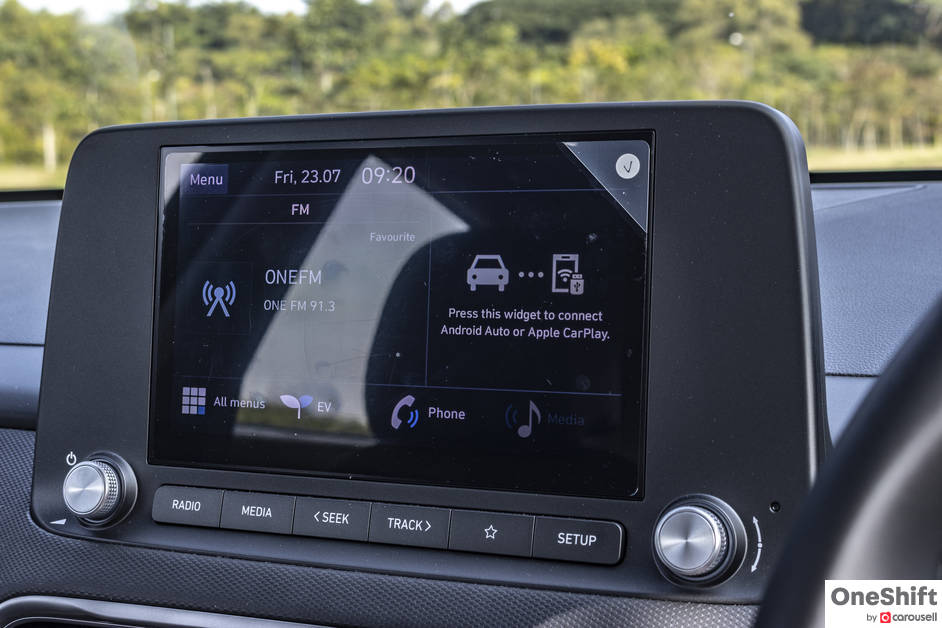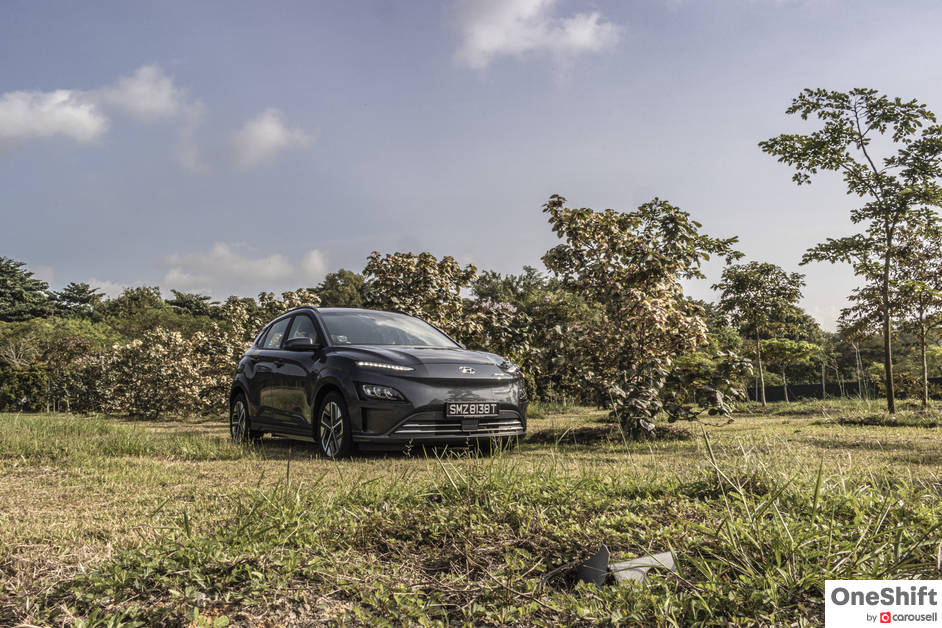For The EVeryman
Korean brand Hyundai, has been on a roll of late, bringing the world relatable everyday EVs to the masses. The Kona range, which was initially launched in Singapore back in 2018 with two model variants, a 1.6 liter turbocharged engine with more bite from its AWD; and a frugal 1.0 three-banger with a younger generation-repulsing stick shift. Of late, the Hyundai Kona has now become one of two main electrified “poster cars” of the brand. We recently drove the Kona Hybrid, and now what we have here is their EV.


Korean brand Hyundai, has been on a roll of late, bringing the world relatable everyday EVs to the masses. The Kona range, which was initially launched in Singapore back in 2018 with two model variants, a 1.6 liter turbocharged engine with more bite from its AWD; and a frugal 1.0 three-banger with a younger generation-repulsing stick shift. Of late, the Hyundai Kona has now become one of two main electrified “poster cars” of the brand. We recently drove the Kona Hybrid, and now what we have here is their EV.

Their compact electrified SUV gets a middle-of-life freshening up, and while we expected something quite ordinary since it is from Hyundai, the restyling exercise is actually quite extraordinary. Hyundai had thinned out the Kona’s DRLs, resculpted their headlamps and more importantly, rubbed away what remaining semblance of a grille that was left. If you ask me, the re-worked front end of the Kona EV looks heaps better.

Most of the Kona’s interior remains untouched, but there are some pleasant tweaks. The infotainment panel which has a 10.25” display has been pleasantly tidied up, where in the past, looked quite toy-like. Both Apple and Android devices are supported, and since it is the range-topping model… with added range, the Kona EV gets a few more goodies, some of which are associated with premium cars. Like its ventilated front seats, and wireless mobile charger. Hyundai has also added ambient lighting to the interior to visually give it a lift.

The re-worked instrument panel, which is now a simplified 10.25” digital cluster, is much neater, though the plastic bezel surrounding the screen is quite poorly moulded - this is the same issue we faced with the Hybrid model.


Even with its compact size, the Kona Electric accommodates four adults decently well. The 361 litre flat cargo area does not have any protrusions that get in the way, and there are useful hooking points to tie your cargo down.

The long-in-range Kona EV gets a more powerful electric motor which delivers 204hp (the two available short range variants are equipped with a 136hp motor) and a healthy 395Nm dose of torque. As with all EVs, acceleration is instantaneous, and in the Kona, it is pleasantly smooth. Most of what you will hear inside the car is the whine of the electric motor, and some road noise.

Perhaps what is comforting about the long-range model is that owners, especially heavy-mileage ones, would not feel so insecure about the distance the car can travel between charges, since it can cover a claimed 484km. The standard range Kona EV, according to Hyundai, can max 305km. But the truth is that most buyers will have personal access to a wallbox to charge their vehicle just about every day. So what I am saying is that in most cases the less-expensive low-range variant is sufficient.

What is going for the 64 kWh battery version though, is it's superior performance, and of-course all of those lovely-lovely-make-you-happy creature comforts. But with whichever Kona EV you pick, you would likely be impressed by how remarkably balanced it feels around bends, since the placement of the battery, which takes up a significant amount of weight, sits under the floorboard; this is unlike the battery in the outgoing Ioniq EV, which is mostly situated nearer to the rear of the vehicle, taking the place of what would have been the hybrid variant’s fuel tank.

One of the features I appreciate in the Kona EV, is the quick way you can adjust the regenerative braking intensity, which is done with “pedal shifters” behind the steering wheel. This allows you to easily make adjustments on the fly, giving you an added degree of control. I have a habit of canceling off “brake-regen”, as I prefer that the car glides when I lift off the throttle; simply because the driving experience is much smoother. If you were to adjust the intensity of the regenerative braking upward, you can operate the Kona EV with just the accelerator pedal, which is quite ideal for driving within built-up areas.

Safety-wise, Hyundai has added even more love, with a few new features, like its Blind-Spot Collision-Avoidance Assist (BCA) and Rear Cross-Traffic Collision-Avoidance Assist (RCCA) both features act as an extra set of “eyes” for you, helping to prevent side and reversing collisions. As a plus, the Kona EV also gets Leading Vehicle Departure Alert (LVDA), great if you are one of those who loves to whip your phone out at the lights, so it prevents you from getting embarrassingly honked at.
However, there are two other new safety features that I feel are among the most important. This is especially if you have kids or seniors in the vehicle. They are the Safe Exit Warning (SEW) which recognises when you are leaving the vehicle and warns you if it is not yet safe to do so. The other is the Rear Seat Alert (RSA), which reminds you if you have left something in the back seat, or even your child/parent, when you have parked your car.

The Kona comes incredibly well-equipped and to my surprise drives very well. Unfortunately, the Long Range model does not come cheap, even after the VES A1 “discount”. And if you do not need to carry more than one other person, the MINI Electric (which just received a facelift) could be quite a tempting similar price and size alternative.

The mid-tier standard car with the sunroof would have comparable equipment and retails for $20,000 less to me, makes more sense. But that is, if you are looking for an emissions free drive (ignoring that we are actually still burning natural gas and garbage to charge our EVs).
Credits: Words and Photos by Clifford Chow








Get the Best Price for your used car
from 500+ dealers in 24 hours

- Convenient and Hassle-Free
- Consumer Protection
Transparent Process
With No Obligation








